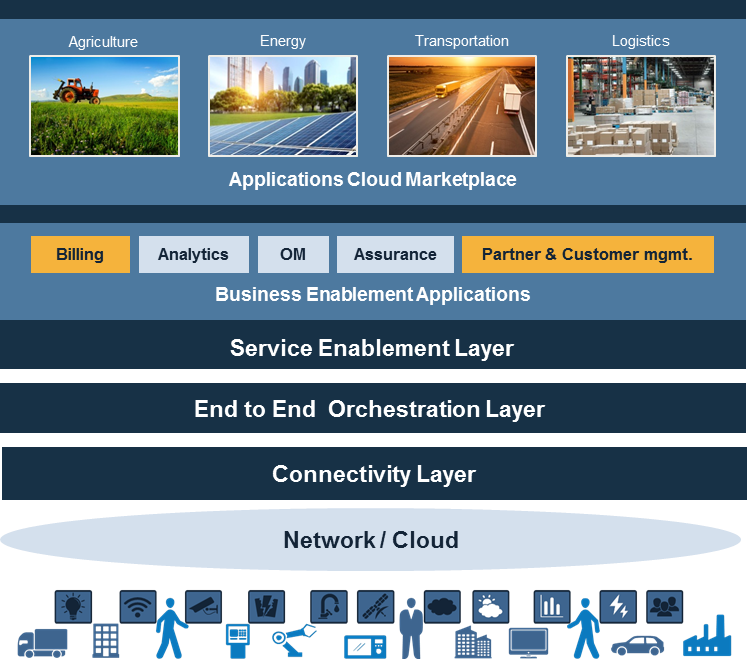The Internet is in the middle of a massive expansion of new end points, with predictions showing that consumers and enterprises will potentially interact with upwards of 50 billion new devices, many with multiple connected sensors that interact within the device as well as externally.
Suddenly, the reality of over 1 trillion new data sources is within arm’s reach. Welcome to the new reality that is the Internet of Things, with the ultimate goal of giving us real-time information, making our personal and business lives easier and increasing efficiency of processes.
The new IoT ecosystems that will evolve as a result are designed to deliver new capabilities, and new levels of connectivity are promising the end user with a better experience with whatever end point they are interacting with. They also will generate vast amounts of data that can be used to solve problems. This data is what creates a high-quality user experience for any new product and its services. It is also one of the most important aspects of IoT that has to be managed, says Paul Hughes, director, Strategy, Netcracker Technology.
Managing the IoT ecosystem
In IoT, the overall user experience must have both quantitative and qualitative components to it. The ecosystem management aspects must embrace everything from provisioning and ordering all the way up the stack to customer management.
The number of interactions must be tracked, measured, and in certain cases, monetised based on the business models in question. Service quality must be also measured based on defined principles that are part of product development and service delivery lifecycle. As with any technology, the lifespan of the “things” is finite, and overall service quality gets tied to the device or end point service quality.
And somehow, all of this must be managed. We can think of it in the way we do with our own mobile devices. Most wireless handsets can be linked to a trade in or upgrade plan, based on the agreements between the service provider and the customer. Thus, service continuity and user experience take precedence to the device itself. The same can be said for the vast IoT ecosystem, except now, management of that ecosystem becomes the new challenge.
Take a smart city where trash and recycling bins use sensors can recognise whether they are full, and need emptying, and waste management vehicles can be routed based on need. A failure at any level of data management creates a significant impact on the remainder of the ecosystem, including wasted truck routes or missed trash/recycling pick-ups, excess fuel consumption, increased traffic, etc. Any and all of these directly affect the experience of both the greater ecosystem and the individual user.
Managing this challenge highlights the utmost importance of effective operational support systems in the new IoT world. Such a complex ecosystem will require service providers to have a structured framework that provides fulfillment orchestration, customer care, and settlements, all of which must be organically interconnected, centralised, and rarely require substantial revisions so as to not upset the balance of that ecosystem.
Thus, the greatest assurance to the success of any IoT ecosystem is a technology foundation that enables:
- Easy access to IoT applications or services through a functional marketplace or platform strategy;
- Connectivity services for all end points, third-party partners and end consumers;
- Applications that work seamlessly across the ecosystem, from the device through to orchestration, service and business enablement;
- Operational support including embedded data analytics technologies that provide real-time visibility into service delivery, service quality, assurance ultimately a high-quality experience.
Data management ensures an unmatched customer experience
The evolution of IoT-related services may still be in its early days, but it’s clear that the business models that emerge must be built around a technology strategy that can react in real time to the quality of the experience. IoT will not be successful based on a simple, best-effort approach.
Instead, it must be intrinsically linked to a data management strategy that ensures the ecosystem is functioning, user experiences are high, and problems can be addressed quickly and with minimal disruption. Service providers should think about the breadth of management tools that provide a real-time view of the entire ecosystem and are capable of delivering, monetising, measuring performance and addressing problems.
From the wealth of data that will be created, with proper analysis and usage, service providers will have the most complete picture of what is needed to ensure that the end user’s experience is a good one, both today and in the future.
The author of this blog is Paul Hughes, director, Strategy, Netcracker Technology
Comment on this article below or via Twitter: @IoTNow_ OR @jcIoTnow











